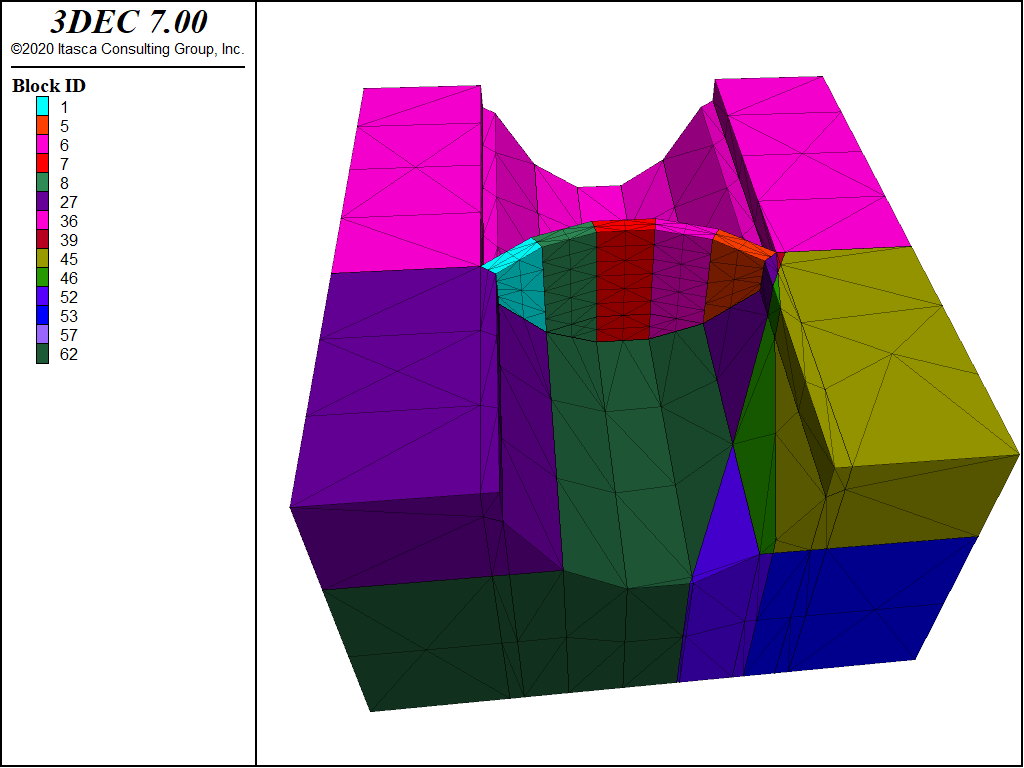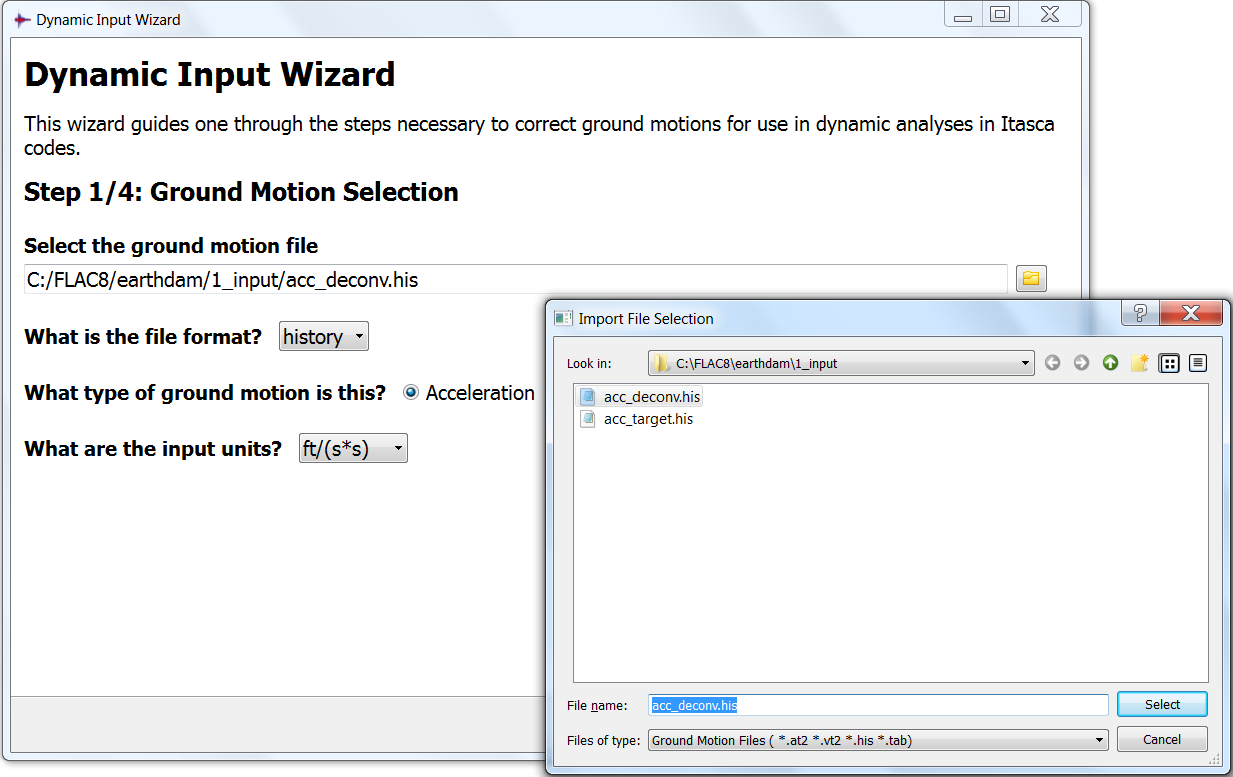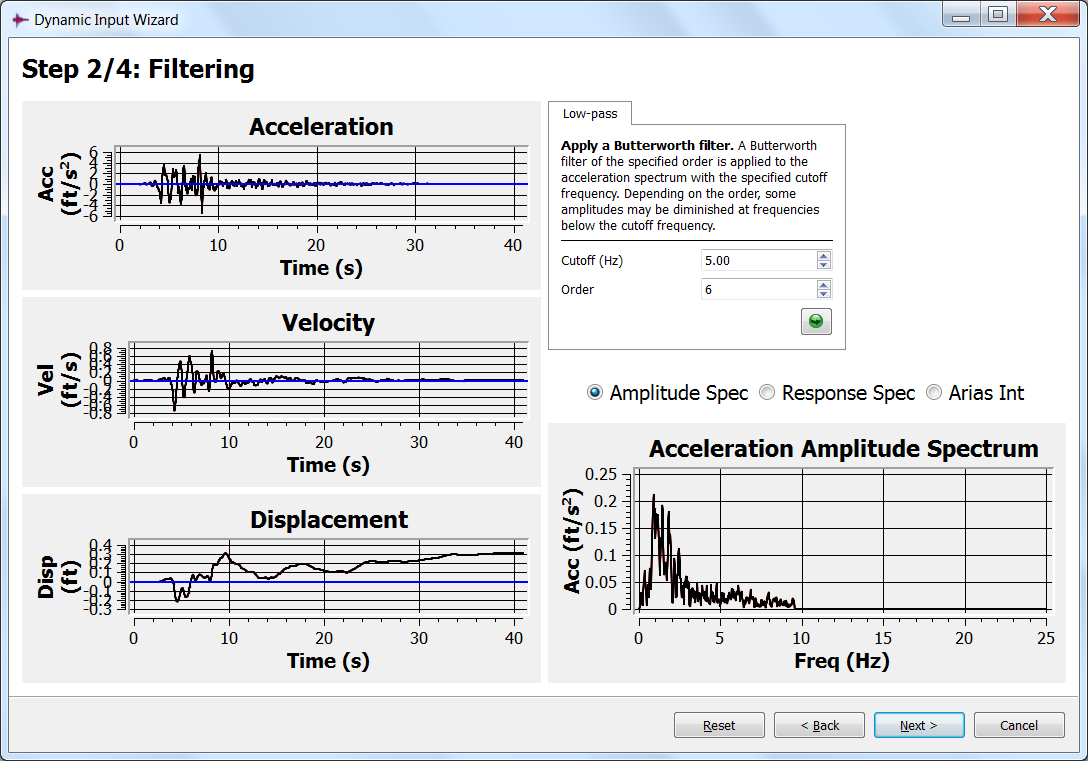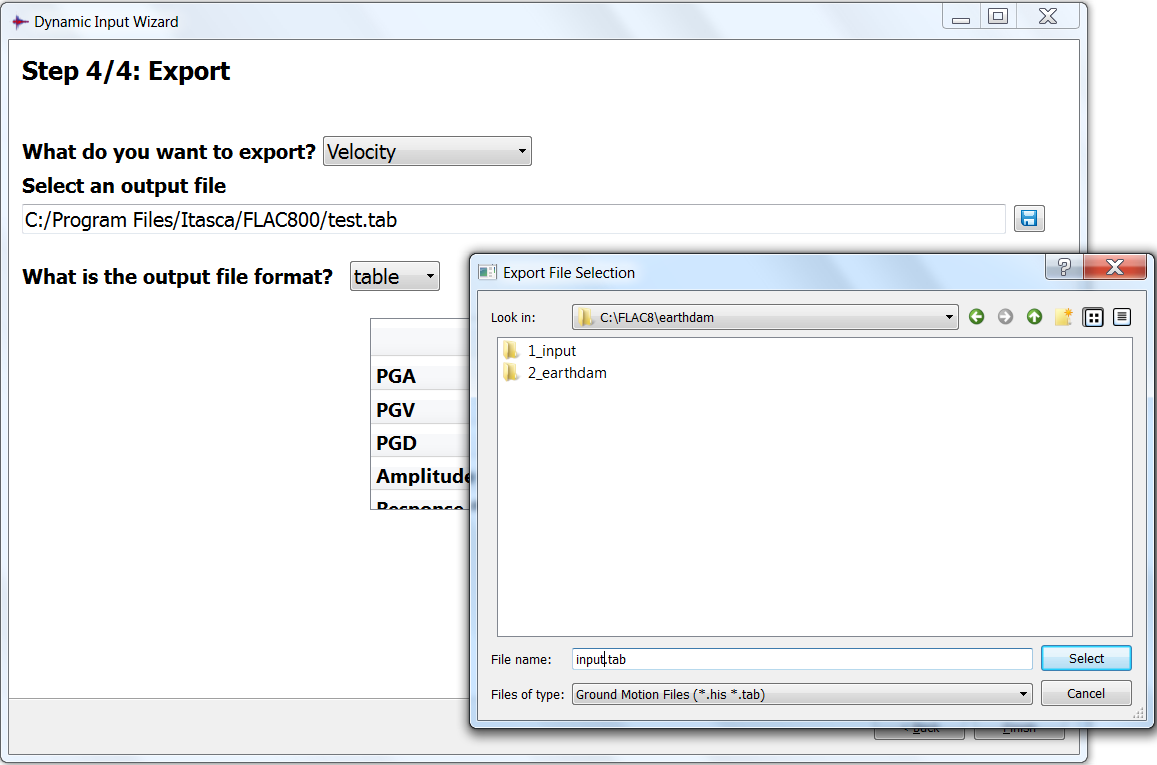- Elastic finite element (FE) blocks (20 or 28-noded hexahedra), previously an option, are now included in the standard license. FE blocks have been widely used in the study of concrete arch dams as they can accurately and effectively represent the bending forms with quadratic functions for displacements interpolation (after Lemos et al., 2008*).


- Dynamic wizard to pre-process ground waves for dynamic (option) analysis.






- Groups and extra variables are now available for all objects, including structural elements and flow planes.
- Save files can be automatically (optionally) compressed for smaller file sizes.
- Save files will be compatible with future 3DEC versions.
- Defining groups using visual- and property-based ranges has been updated.
- Block zone data can now be exported to a Visualization ToolKit (VTK) file format for use in ParaView, a powerful, open-source, multi-platform data analysis and visualization application. By default, stresses, groups, and displacements are exported; however, other data may also be included.
- Isolated Rigid Body Analysis:
- Excavation block stability can now be evaluated considering an “isolated rigid body” analysis using the BLOCK ANALYZE-STABILITY command.
- Block stability is evaluated by calculating a factor of safety on the block faces.
- The method evaluates the stability of a single 3D rigid block of any shape located at the surface of an underground excavation. The block is “isolated”, meaning it is analyzed as if it exists alone in the rock mass; the presence of other potential blocks is ignored. The block moves as a rigid body (in translation and rotation) and interacts with the surrounding continuous rock mass via joint elements. Initially, before excavation, the block is subjected to initial stresses applied on all of its faces. The approach consists of calculating the block movement and stress variation on faces due to the release of stresses on the excavation faces from the excavation process.
- The method gives theoretically the same solution as an equivalent 3DEC simulation of an excavation with only one rigid block located at the free surface. However, it is more straightforward, as only the block geometry, joint properties, and stress data are needed.
*Lemos, José, Sérgio, Oliveira, and Paulo, Mendes (2008). Analysis of The Dynamic Behaviour of Cabril Dam Considering the Influence of Contraction Joints. EURODYN 2008, 7th European Conference on Structural Dynamics, 7 - 9 July, 2008, Southampton, E255, 8 pages: https://bit.ly/3iuk8aG.
